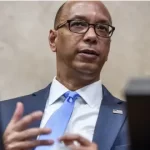In a recent tweet, President Joe Biden sparked excitement among Americans when he hinted at the possibility of more stimulus checks being distributed in the near future. The tweet, which stated “Help is on the way,” quickly gained traction on social media and left many wondering if Congress would follow through with additional financial assistance.
The COVID-19 pandemic has had a significant impact on the economy, with many individuals and businesses struggling to make ends meet. In response, Congress has passed several stimulus packages over the past year, including the CARES Act and the Consolidated Appropriations Act. These packages have provided financial assistance in the form of direct payments to Americans, also known as stimulus checks.
The first round of stimulus checks, which were distributed in April 2020, provided $1,200 to qualifying individuals and $2,400 to qualifying married couples. Subsequent rounds of stimulus checks, including those distributed as part of the Consolidated Appropriations Act, provided $600 to qualifying individuals and $1,200 to qualifying married couples.
Stimulus Check Update: Will President’s Recent Tweet Change Anything?
While President Biden’s tweet has generated a buzz about the possibility of more stimulus checks, it remains to be seen whether Congress will act on the proposal. Some lawmakers have expressed support for additional financial assistance, while others have raised concerns about the potential cost.
It is worth noting that the process of passing stimulus legislation can be lengthy and complicated, as it requires the approval of both the House of Representatives and the Senate. It is possible that any potential stimulus package, including additional stimulus checks, could take some time to be finalized and implemented.
In the meantime, it is important for individuals to stay informed about the latest developments and to consider other options for financial assistance, such as unemployment benefits or assistance programs offered by state and local governments.






